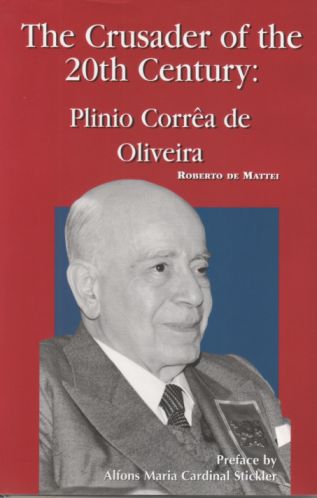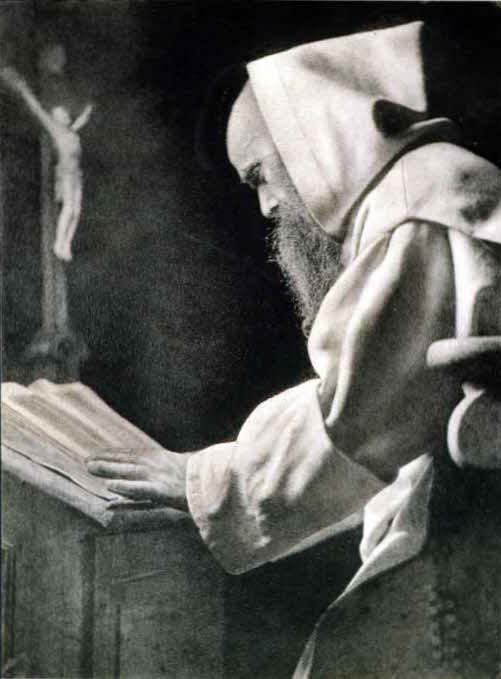|
Chapter IV
12. Ambiences, customs, civilizations
|
|
|
In Revolution and Counter-Revolution Plinio Corrêa de Oliveira writes that “Given that God established mysterious and admirable relations between, on the one hand, certain forms, colours, sounds, perfumes, flavours and, on the other, certain states of soul, it is obvious that, through the arts, mentalities can be profoundly influenced and persons, families and peoples can be induced to form a profoundly revolutionary state of spirit.”104 This passage is fundamental for understanding the special contribution of Plinio Corrêa de Oliveira to the magazine Catolicismo in the column “Ambiences, customs, civilizations”, whose extraordinary importance was not understood by everyone. The ambience is the harmony that results from the affinity of various beings gathered in the same place, and it exercises a profound influence on men. “Men formed ambiences in their image and likeness, ambiences in which their customs and civilization are reflected. But the opposite is also true to a large extent: the ambiences themselves formed, in their image and likeness, men, customs and civilizations”.105
Proof of the importance of the ambience for the balanced development of natural and supernatural life is constituted by the wisdom with which God organized the great ambience called creation in which we are immersed, formed by the living beings who surround us: plants, animals, and which has at its head man, the image and likeness of God. The interpretation and comments of the physiognomy of exceptional men, saints or revolutionaries, in this sense, were a constant note of the thought of Plinio Corrêa de Oliveira. In fact a man’s way of being is expressed in his physiognomy, in his behaviour, in his features and even in his clothes, whose change in history is linked to the change of human personalities and types.106 “Society, as it were,” Pius XII affirmed “speaks with the clothes it wears; with its clothes it reveals its secret aspirations and it uses it, at least in part, to construct or destroy its future”.107 In turn, the Brazilian thinker notes: “If clothing should be in accordance with the user and with the circumstance in which it is used, there must be a harmony between a man’s eminence and the eminent position he has attained. But God does not only have eminent men as children. Every human creature, no matter how modest, has an inherent dignity that is natural and unalienable. And even more so, immeasurably so, is the dignity of the least, the least noticed son of the Church, as a Christian, that is, as one baptized, as a member of the Mystical Body of Our Lord Jesus Christ.”108 The same applies for art, for urban planning, for architecture which are the result of a group of ideas, tendencies, aspirations and psychological attitudes.109 He counters the ancient medieval order, which expresses the harmony of scholastic philosophy,110 with the modern Babel. “But the typical sounds of the immense modern Babels, the noise of the machines, the brouhaha and voices of men who toil in search of gold and pleasure; who no longer know how to walk, but run; who no longer know how to work without becoming exhausted; who are unable to sleep without tranquilisers nor to have fun without stimulants; whose laugh is a frenetic and sad grimace; who no longer know how to appreciate the harmonies of real music, but only the cacophony of jazz; all of this is but the excitation of disorder of a society that will only find true peace when it will have found the true God once again.”111 Just like clothes, so language, gestures and ceremonial are also elements that have a great cultural and pedagogical importance for the common good of peoples.112 It is a natural social “liturgy” that is expressed in order and in magnificence.
Left: canonization of St. Thérèse of the Child Jesus, in St Peters Basilic (Rome). Right: a religious leafs a prayer book In the firmament of the Church there is harmony between apparently contradictory extremes such as the solitary vocation of the monk, inspired by a total renunciation of the world, and the splendour of the Pontifical ceremonies that used to once express the greatest pomp of which the world was capable. “No, there is no contradiction between one order of values and another, except in the mind of the egalitarian, servants of the Revolution. On the contrary, the Church shows its sanctity precisely because with equal perfection, with the same supernatural genius, it knows how to organize and stimulate the practice of virtues that shine in the obscure life of the monk and those that sparkle in the sublime ceremonial of the Papacy. Even more than this, one balances the other. We could almost say that one extreme (in the good sense of the term) compensates the other and is reconciled. The doctrinal basis where these two holy extremes meet and harmonize is very clear. “God, Our Lord, gave creation to us to serve as a means to reach Him. Thus, culture and art, inspired by Faith, emphasize the beauties of irrational creation and the splendours of the talent and virtue of the human soul. This is what is called culture and Christian civilization. In this way, men are formed in truth and beauty, in the love of the sublimity, of hierarchy and of order that reflect in the universe the perfection of Him who made it. Thus, creation in fact helps towards our salvation and the divine glory. But, on the other hand, they are contingent and ephemeral. Only God is absolute and eternal. It is our duty to remember this. This is why it is good to keep a distance from created beings so that by despising them we only think of the Lord. According to the first way, that is, by considering everything creation is, we arrive at God. According to the second, we arrive at God by considering what it is not. The Church invites her children to go by either path simultaneously, that is, by considering the spectacle of its pomps as well as by the abnegation that only She knows how to inspire and to effectively bring about”.113 Notes: 104) P. Corrêa de Oliveira, Revolution and Counter-Revolution, p. 63. 105) P. Corrêa de Oliveira, “Sêde prudentes como as serpentes e simples como as pombas”, Catolicismo, no. 37, January 1954. 106) P. Corrêa de Oliveira, “Indumentária, hierarquia e igualitarismo”, Catolicismo, no. 133, January 1962; Cf. also Id., “O hábito e o monge”, Catolicismo”, no. 62, February 1956. 107) Pius XII, Discorso di Gran Cuore of 8 November 1957, in DR, vol. XIX, p. 578. 108) P. Corrêa de Oliveira, “Dignidade e distinção para grandes e pequenos”, Catolicismo, no. 33, September 1953. 109) P. Corrêa de Oliveira, “O espírito cristão e o espírito pagão manifestados pela arquitetura”, Catolicismo, no. 7, July 1951. 110) Cf. Erwin Panofsky, Gothic architecture and Scholasticism, Latrobe, Archabbey Press, 1951. 111) P. Corrêa de Oliveira, “Tranquilidade da ordem, excitação na desordem”, Catolicismo, no. 110, February 1960. 112) P. Corrêa de Oliveira, “Têm os simbolos, a pompa e a riqueza uma função na vida humana?”, Catolicismo, no. 82, October 1957. cf. also, on the subject of the ceremonial of the pontifical power, the two studies “As cerimonias da posse de Eisenhower à luz da doutrina católica”, and “Por que o nosso mundo pobre e igualitário se empolgou com o fausto e a magestade da coroação?”, Catolicismo, no. 27, March 1953, and no. 31, July 1953. 113) P. Corrêa de Oliveira, “Pobreza e fausto: extremos harmonicos no firmamento da Igreja”, Catolicismo, no. 96, December 1958. |
|





